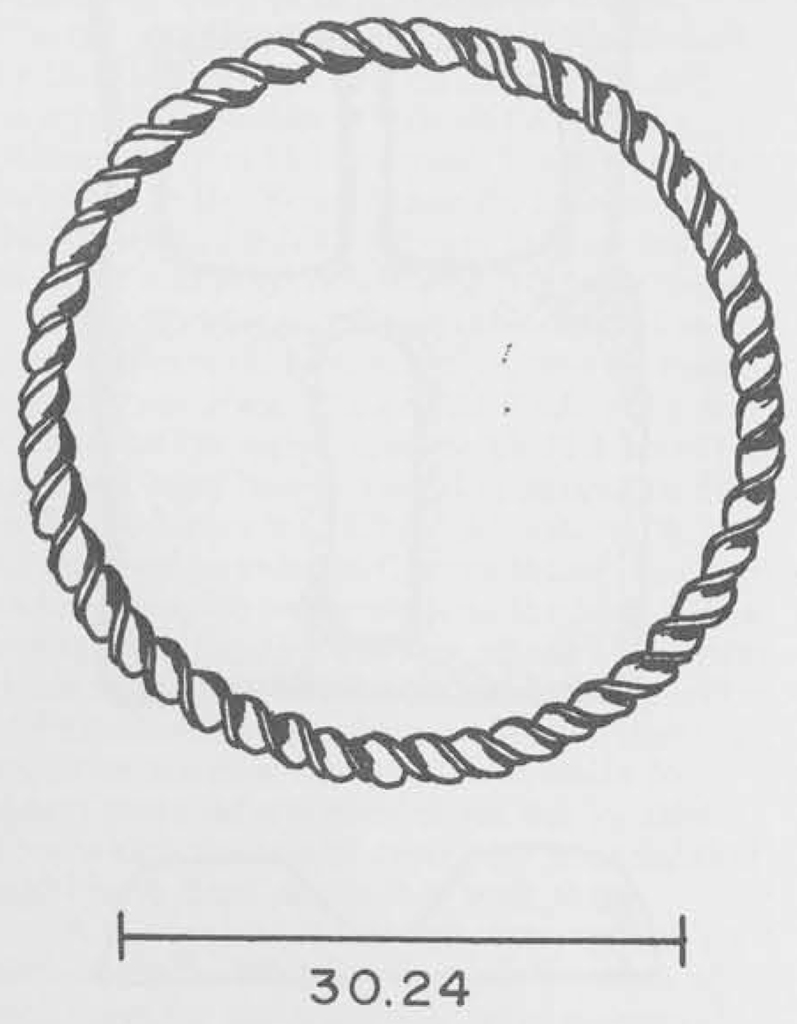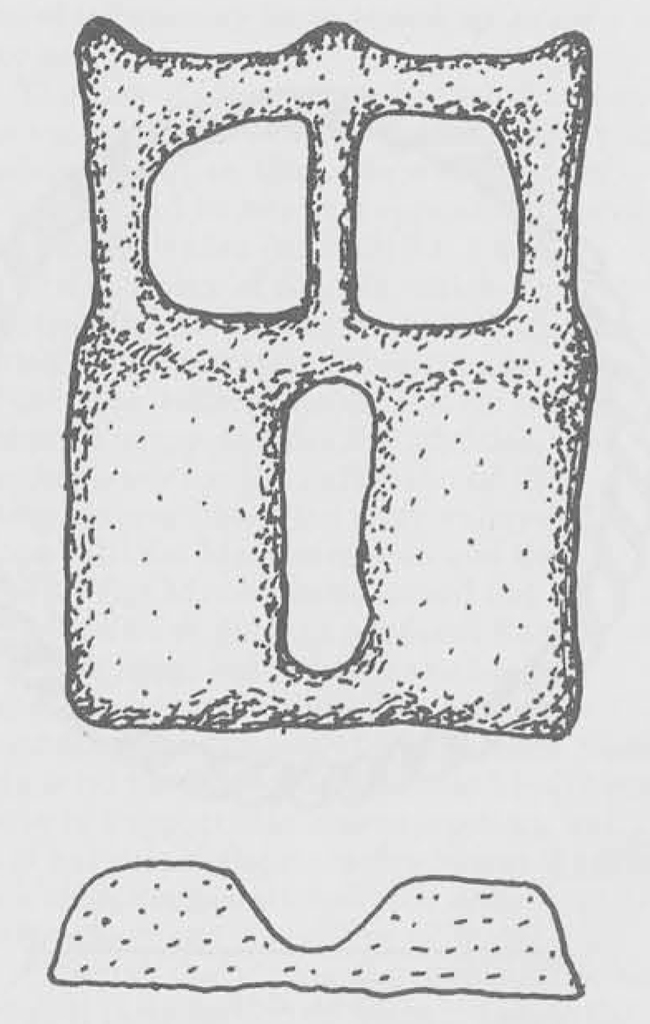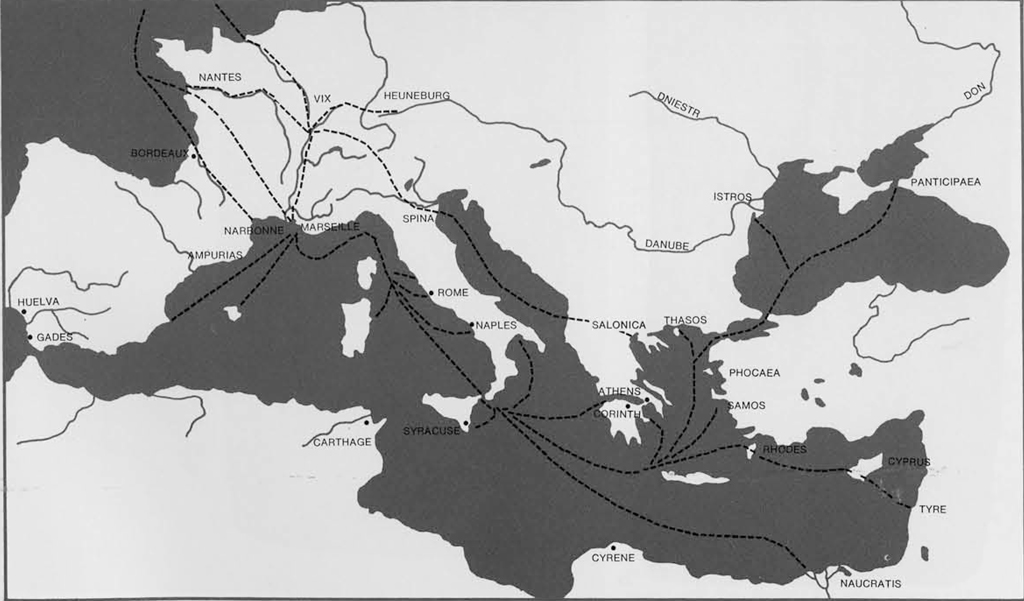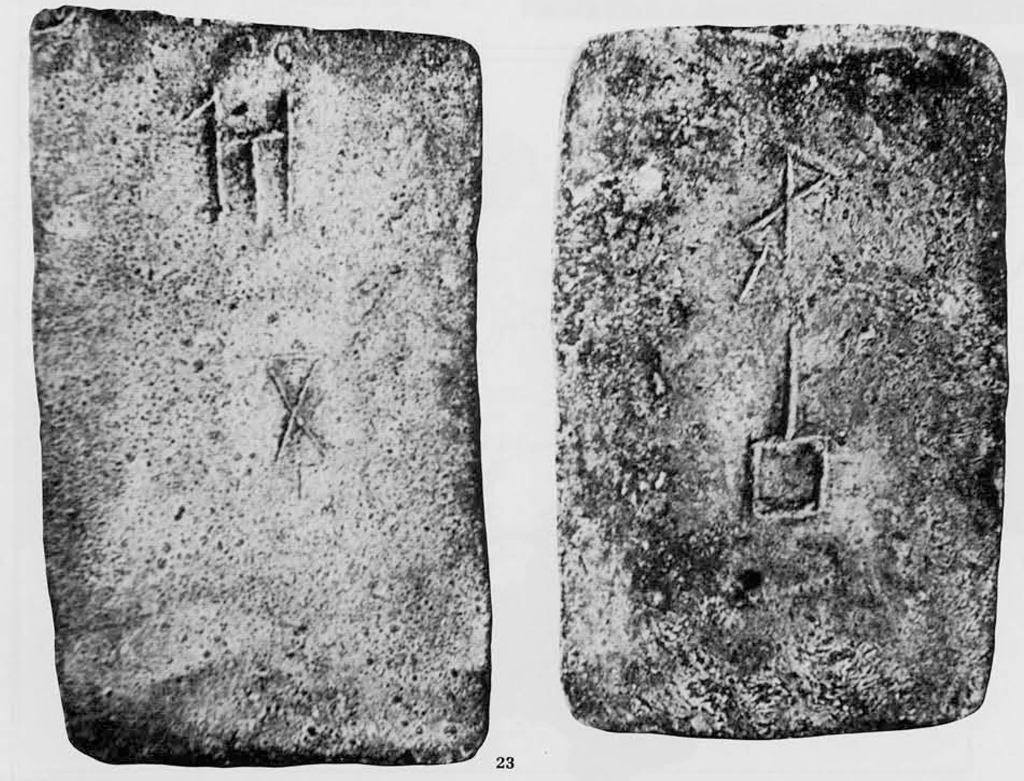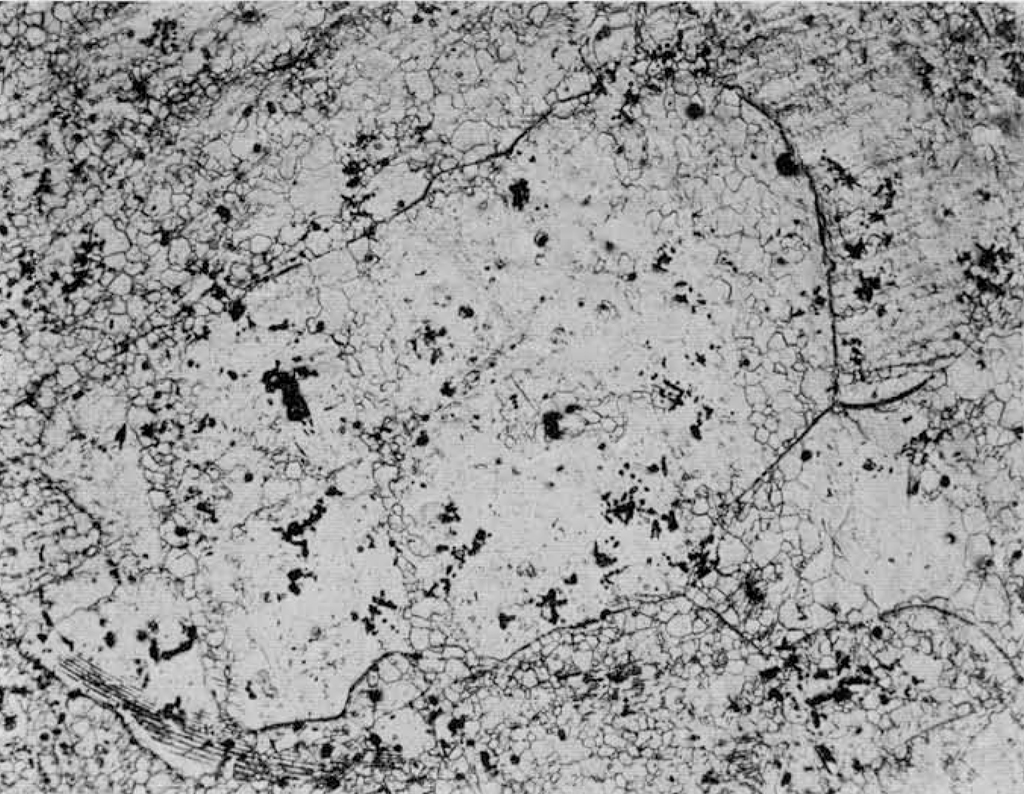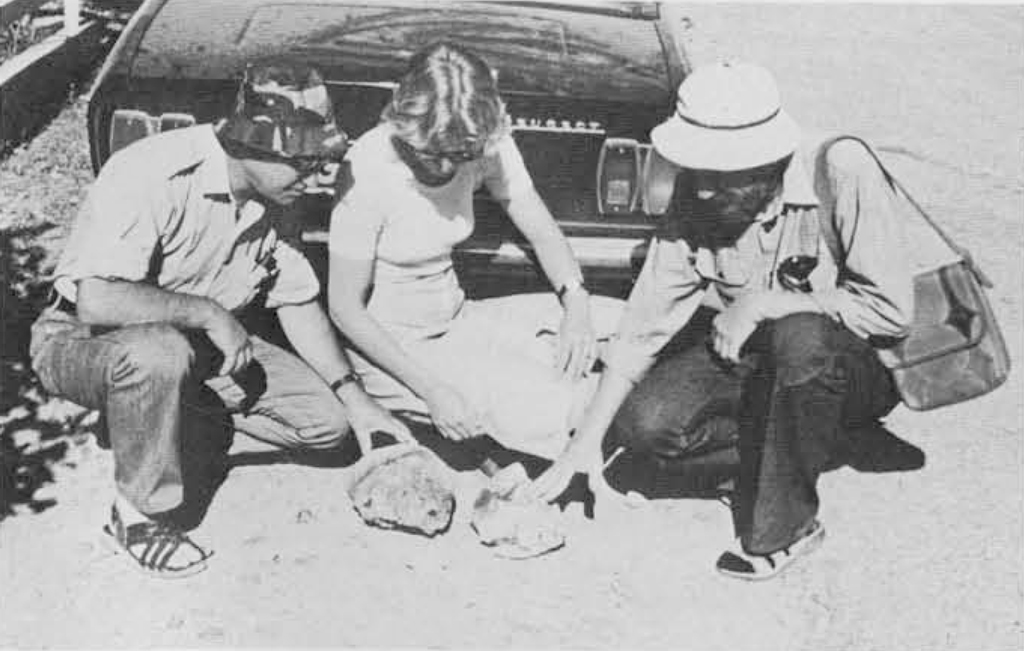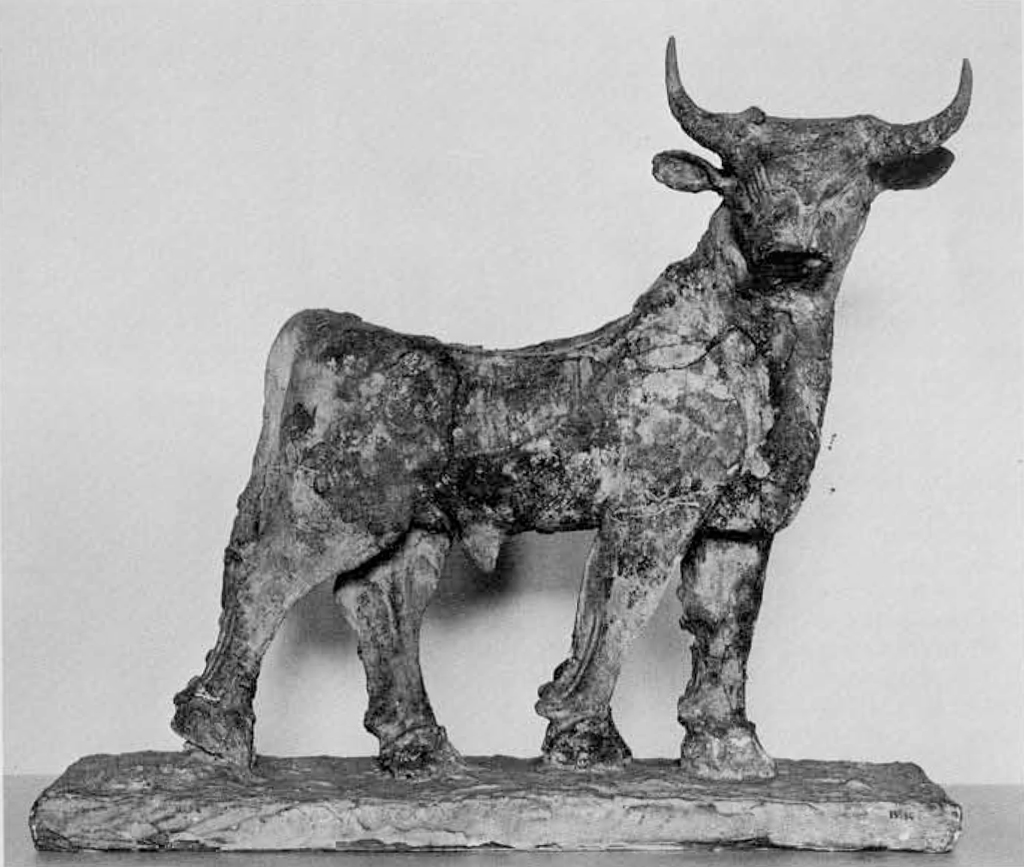Bronze—an alloy of copper and tin—gave its name to one of the periods of antiquity. It is now clear that pure copper and other alloys of copper were also used during the Bronze Age in the Near East and eastern Mediterranean (roughly 3000-1200 B.C.), so the appellation cannot be considered strictly correct, But as a label it is still apt because bronze objects constitute the majority. Beyond the chronological distinction which the term Bronze Age implies lies the importance of the materials used in antiquity and the extent to which these materials have been important in the reconstruction of ancient lifestyles by archaeologists in the last 150 years. Materials in the form of artifacts and waste products are the tangible evidence of the activities and thoughts of ancient peoples and may be used in an attempt to recapture the past. We study materials with the goal of reconstructing the social and cultural systems in which they were produced and how ancient technology and technologists contributed to and were influenced by these systems.
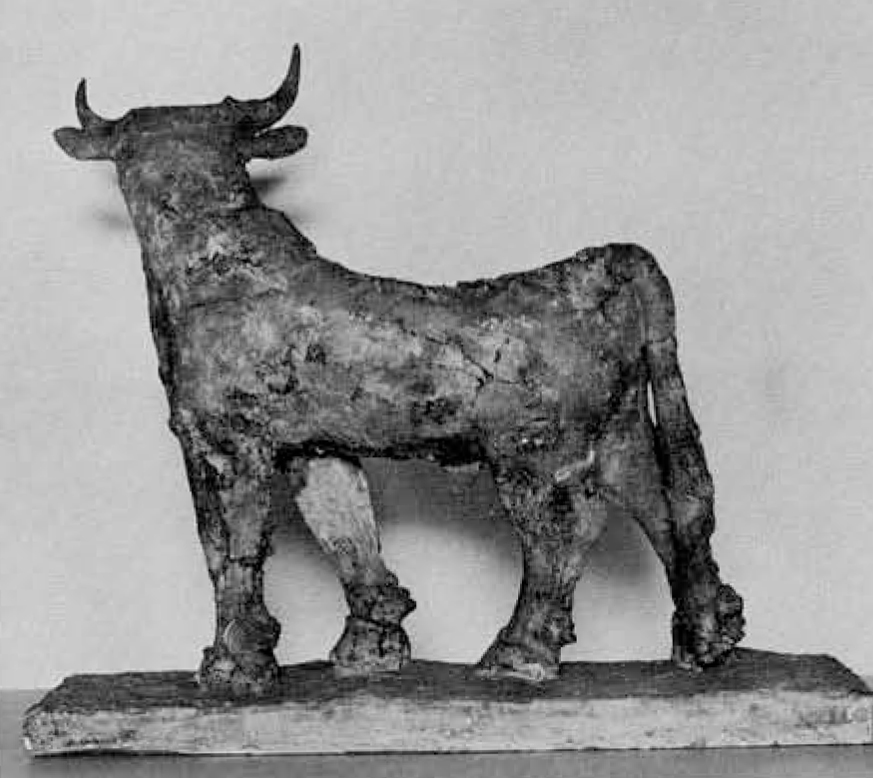
Museum Object Number(s): B15886
Metals differ from pottery in that the necessary raw materials are of limited distribution and so must be transported in response to needs of other communities.
Metalworking technology is more complicated than pottery production, with many people involved in the various phases of metallurgical endeavors, from extraction of ores to object manufacture. Metal objects are therefore less sensitive indicators of culture change on a local level, but are more productive than pottery in defining patterns of long-distance trade and the nature of transmission of ideas.
The two metals which make up bronze have been of interest to scholars for many years. The sources of copper and tin available to ancient metalworkers have been the subjects of much speculation, and it is now more or less agreed that the copper deposits of Cyprus, Turkey, Palestine and Iran were all important factors in Bronze Age metallurgy. Tin has proved more elusive because there are almost no geologically verified deposits in Southwest Asia or the eastern Mediterranean area. Because the origin of the tin used by ancient bronzeworkers cannot be pinpointed with accuracy, it has become the mystery metal of the ancient Near East. There are several lines of inquiry which should assist in locating tin sources and understanding the nature of the problem: geology and metallurgy, textual evidence and archaeological finds.
Geology Metallurgy
Most of the world’s tin deposits are hydrothermal, found in conjunction with granite or the granite family of rocks, Veins of tin running through granite, known as hard rock tin, were inaccessible to the ancient miner. In antiquity, tin stone or cassiterite (SnO2) was used. It is an oxide formed by weathering on the surface of the tin deposit, which was washed downstream in the form of nuggets which, because of their weight, were eventually deposited in the stream bed (see Charles 1975 for details). The best analogy for the activity of ancient miners in recovering stream tin is to the California ’49ers and their quest for alluvial gold. Like a gold stream, a tin stream can be panned out and leave no trace of its farmer contents. This situation certainly complicates the modern search for ancient tin sources, but there is hope in the fact that the host granitic formation will remain and the original tin lode may be identified,

Image Number: 46307

Image Number: 46304
Museum Object Number(s): 31-52-44 / 31-52-37 / 31-52-182 / 31-52-256 / 32-21-121 / 31-52-215 / 31-52-270 / 31-52-273 / 32-21-565 / 32-21-115 / 31-52-177 / 32-21-123 / 31-52-264
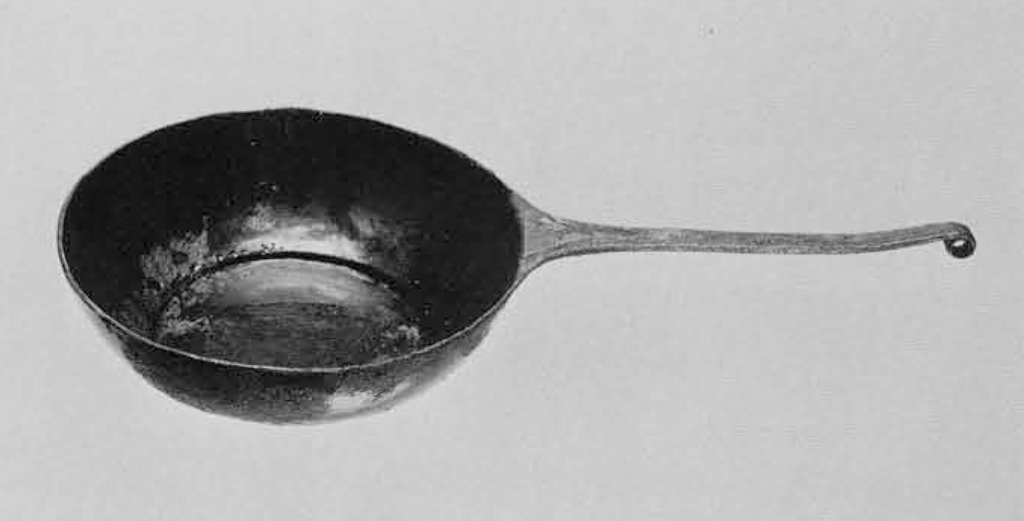
Museum Object Number(s): 31-52-262
The major tin sources in the world—Malaya, Indonesia, Thailand, China, Siberia, the Congo area and Bolivia—are far removed from the Mediterranean area and all except one are not known to have been exploited until after the time when tin bronze was being made in the Near East, shortly after 3000 B.C. The exception is Thailand where recent excavations [see Expedition 18, no. 4) at Non Nok Tha and Ban Chiang have shown a flourishing bronzeworking tradition which may predate the mid-fourth millennium B.C. The earliest analysed find from Ban Chiang—a dagger which dates to about 3600 B.C.contains 2.5% tin (determined by atomic absorption spectroscopy), a figure which indicates a deliberate alloy. By 3000 B.C., ancient metalsmiths in Thailand were producing good bronze with about a 10% tin content and were competently handling casting, coldworking and annealing. The early production of bronze in Thailand may eventually be found to have some relationship with the development of allaying techniques in the Near East. No artifacts of metallic tin have yet appeared in excavations in Thailand.
A major tin source is not of course necessary if a number of minor sources are available. Smaller tin deposits are found in areas much closer to the Near East than Thailand and deserve consideration. It should be repeated here that, although numerous Near Eastern tin sources have been cited in the literature, exploration in the Troad, Anatolia and Iran has failed to reveal any tin deposits (Muhly and Wertime 1973; Muhly 1976: 97-102). Recent geological research has shown that Egypt has significant tin reserves in the Eastern Desert, northeast of Aswan (Muhly 1976: 102-104). Hieroglyphic rock inscriptions testify to an Egyptian presence in the area in the Old Kingdom, but it is not yet known whether tin was recovered from this area in the third millennium. The Egyptians, in spite of a sophisticated metallurgy, did not alloy copper with tin until the second millennium, so if a case can be made for Bronze Age exploitation of the Eastern Desert tin it is most likely that it did not come until after 2000 B.C. An expedition consisting of Muhly, George Rapp and Theodore Wertime surveyed the area of tin deposits in December, 1976; at the time of writing the results of this work are not yet available.
In the Mediterranean basin, Tuscany and Iberia may be regarded as possible tin sources (Muhly 1973: 253-256), but there is no evidence that these deposits were worked during the Bronze Age. Bohemia is often cited as a passible tin source, but the deposits there are in veins of granite rock and therefore inaccessible to Bronze Age miners (Muhly 1976: 99-100). Tin also occurs in Cornwall but again it is not known whether it was recovered in the Bronze Age. In any case, northern and western tin deposits are inconsistent with the evidence of Near Eastern texts, in which tin is stated to come from the east (see below).
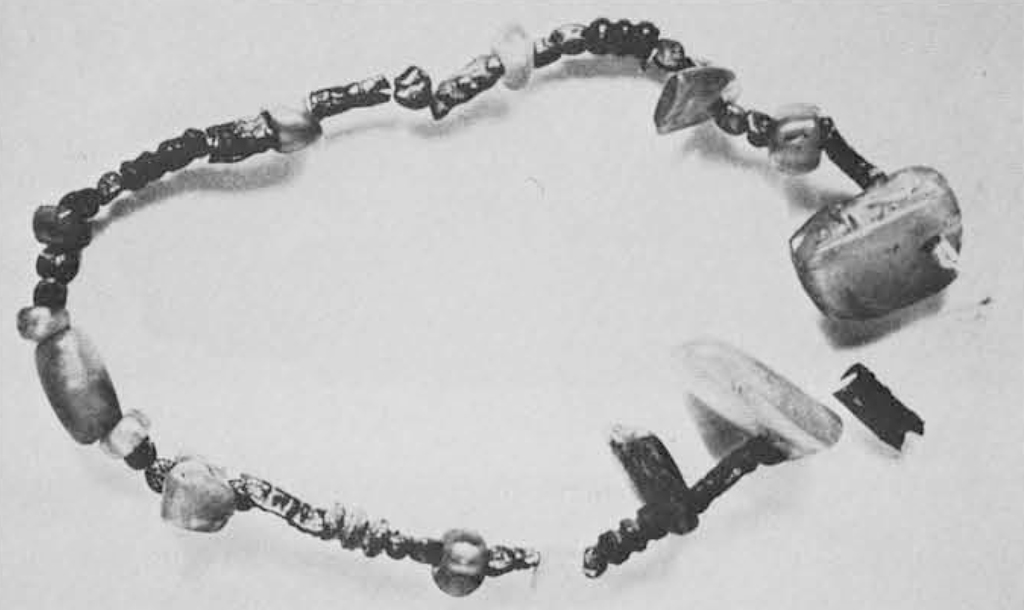
The smelting of tin from the oxide cassiterite with charcoal is fairly simple because of its low melting point (232°C). The smelted tin can then be added to smelted copper to produce bronze, Alternatively, copper ores and cassiterite ores could have been mixed before smelting and smelted together. This method might have produced alloys with variable tin percentages, although cassiterite is a high density ore containing almost 80% tin in most cases. Joint smelting may explain why few bronze objects have a tin content which reflects the 6:1 or 7:1 copper:tin ratio described in some Near Eastern texts. Co-smelting of copper and tin on a large scale is not likely because it would have required shipping tin ores to copper sources. Direct cassiterite additions to molten copper would not have produced a good bronze, since any amount of cassiterite in molten copper will result in only about a 1% tin content.
Tin as an alloying element in copper is superior to arsenic and zinc, metals also added to copper in antiquity. All three alloying elements make copper more fluid and thus easier to cast, but tin in a quantity of about 10% makes copper harder and stronger than arsenic and zinc additions. Tin also imparts greater corrosion resistance than zinc and arsenic, and reduces the melting point of copper from 1083°C to about 1020°C, for 10%; 5% arsenic reduces the melting point about 25°C, while zinc additions of 10% lower the melting point by about 30°C. An arsenic-copper alloy is darker and more satiny than pure copper, and zinc makes the copper more golden, while tin produces the characteristic bronze color. Tin must have been regarded as the superior alloying element because of the effort expended in obtaining it.
Various characteristics of tin are of interest to the archaeologist in terms of understanding its preservation and identification. The “tin pest” might explain in some areas the absence of recognizable artifacts of metallic tin. The tin pest is an allotropic modification in which tin changes from one form to another, i.e. goes from a white solid to a grayish powder, which in laboratory situations occurs at about 13.2°C. In reality, a much lower temperature is probably needed; the maximum velocity comes at -40°C. Even when the change has been started, the rate of transformation is slow. The “tin pest” is contagious, The special circumstances needed to develop the pest indicate that it is a factor in preservation in only a limited number of areas. The major recorded outbreak of tin pest illustrates the conditions under which it develops. When Napoleon’s army was retreating from Moscow in the bitterly cold winter of 1812, the tin buttons on the French uniforms started to disintegrate, leaving the flanks of the army more exposed than ever.
The “tin cry” provides a means of identifying tin in the field. If a small sliver of metal is removed from a tin artifact and twisted, it will produce an audible sound. The sound is produced by a shear movement of atom layers over other atom layers, which in tin occurs at very high speeds. Zinc is the only other metal that “cries,” but as far as we know it was not used in a metallic form in the Bronze Age. “Tin sweat” forms on the surface of cast bronzes when the liquid metal contains appreciable amounts of hydrogen which is released as a gas in a later stage of solidification. The gas forces tin-rich liquid, the last part of the copper-tin mixture to freeze, to the surface where it forms a silvery coating.
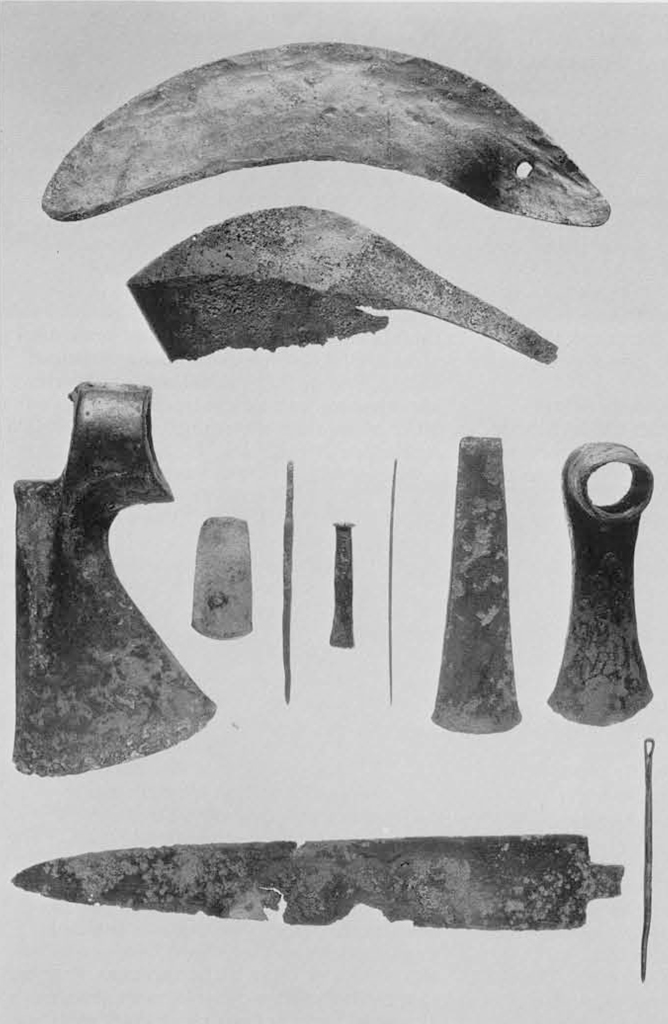
Image Number: 46306
Museum Object Number(s): 31-52-219 / 32-21-100 / 32-21-358 / 32-21-359 / 32-21-110 / 32-21-97 / 32-21-22 / 31-52-30 / 31-52-39
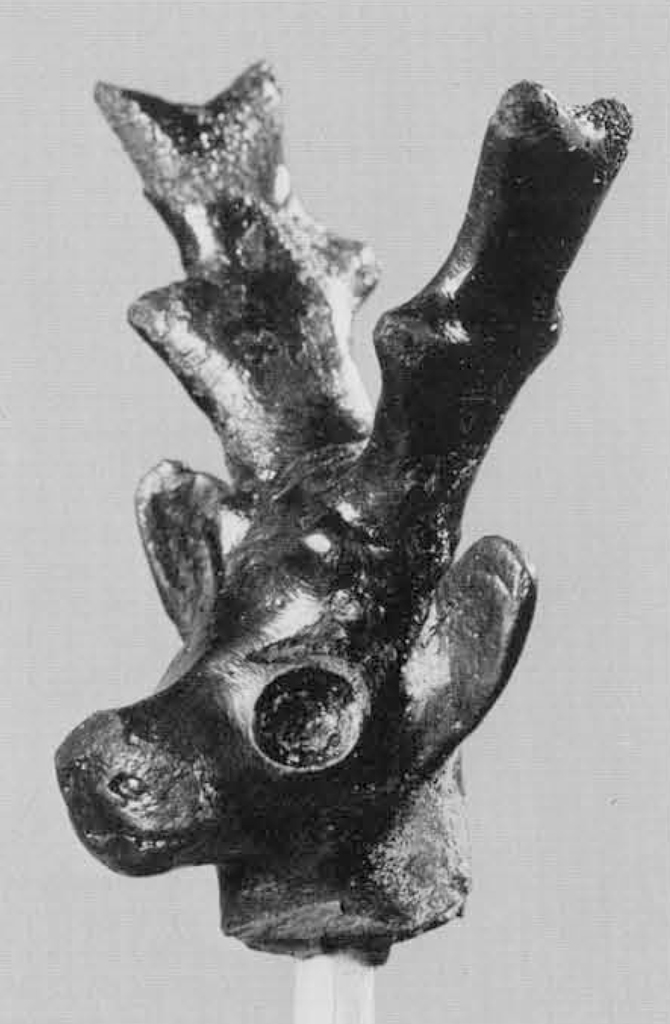
Image Number: 46305
Museum Object Number(s): 31-52-270
Textual Evidence
Sumerian AN.NA and Akkadian anaku/ annaku mean tin and the meaning is now accepted by most scholars (for differing viewpoints see Eaton and McKerrell 1976: 179-182 and Kashkai 1976). The earliest references to tin and bronze come in the Sumerian texts from Fara which date to the middle of the third millennium B.C. Analytical work supports the textual evidence by establishing that tin bronze was being made in Mesopotamia at the same time (Moorey and Schweizer 1972: 180-185). The major textual evidence pertinent in a reconstruction of the tin trade comes from the early second millennium, in the tablets of Kiiltepe/Kanesh and Mari. Merchants from Assur brought tin in appreciable quantities to central Anatolia, implying that the latter area did not have its own sources of tin, at least in this period. But the texts do not tell us how the tin got to Assur and where it came from. It has generally been assumed that the tin came from northwestern Iran, although this is not explicitly stated and there is no geological evidence for tin in that area.
The tin itinerary from Mari, about a hundred years after the Kultepe Old Assyrian texts, adds to the list of distribution points but does not say much more about sources. Tin was shipped from Mari to such places as Aleppo, Qatna, Ebla, Layish (Dan), Hazor and ultimately to the “Kaptorite” in Ugarit. The involvement of this person in the tin trade—Kaptorite perhaps meaning Cretan—suggests the extent of the distribution of the precious metal. In this period Larsa and Sippar in southern Mesopotamia played important roles in the tin trade as points from which the tin was shipped to the north. Beyond southern Mesopotamia the tin route fades into obscurity, leaving us with the possibilities of Iran and the Persian Gulf as stations from which tin was shipped. Gudea of Lagash (22nd century B.C.) does state specifically that he used tin from the land of Meluhha. Unfortunately the location of Meluhha is not precisely known, but it is generally thought to indicate the Indus Valley civilization.
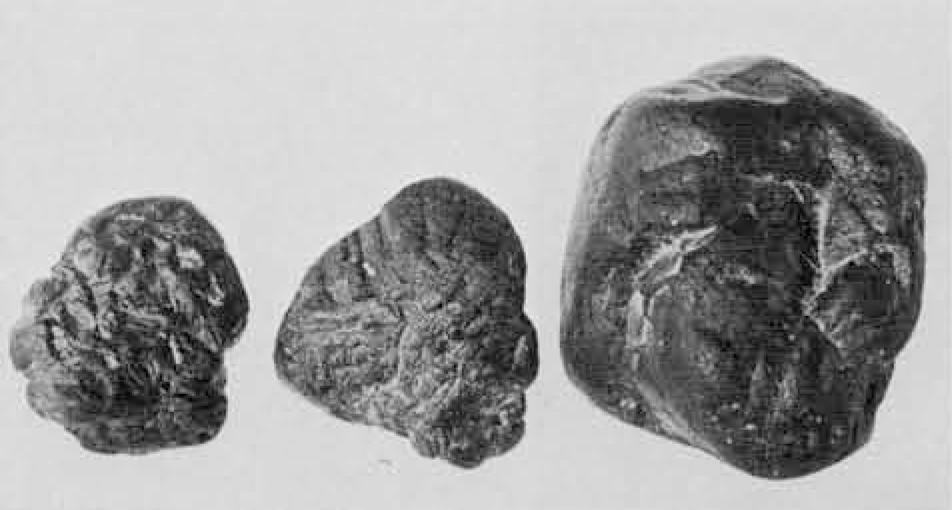
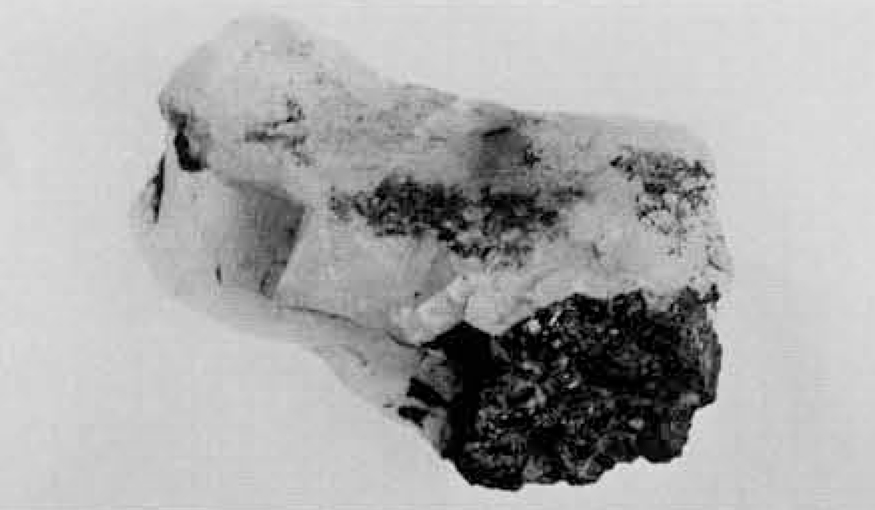
Ancient writers are oddly incurious about the source of the tin which they used in great quantity. In the Middle Assyrian period tin was used for paying fines and for paying interest on loans. Neo-Assyrian kings received enormous amounts of tin as tribute. It is obvious that a well-organized trade in tin supplied Mesopotamia from the third millennium onward, with some interruptions, and that Mesopotamia shipped tin to the west, same of which may have ended up as far away as Crete.
The rise of Mycenaean Greece may have been accompanied or even encouraged by the development of an alternate source of tin. Tin bronze and amber first appear in Greece in the Shaft Graves (ca 1600 B.C.) and are part of a complex of objects which suggest great wealth and the beginnings of organized political administration. There is now good evidence for trade in amber and tin between northern Europe and the British Isles, and some evidence for the extension of this trading pattern down the river valleys of Europe into the Mediterranean and the Adriatic. The Mycenaeans would not themselves have gone to northern Europe or the British Isles, but would have become prosperous by controlling the southern—presumably maritime—end of the trade route. There is no textual evidence from Mycenaean Greece to support this reconstruction, but that is not surprising since the Linear B tablets which mention metals describe only metalworkers and quantities of metal.
Although the Mycenaean evidence is not textual, it is important to place it beside the Near Eastern material. It is possible that, after 1600 B.C., tin came into the eastern Mediterranean area from two directions. Tin shipped from Greece was probably never an important factor in the literate Near East, so details of its trade and origin remain unknown. The major question related to tin being sold by Mycenaeans involves Cyprus: was intensive copperworking activity in Cyprus in the latter part of the Late Bronze Age related somehow to tin supplies being controlled by Mycenaeans, or can it be explained only on the basis of the variability of the archaeological record?
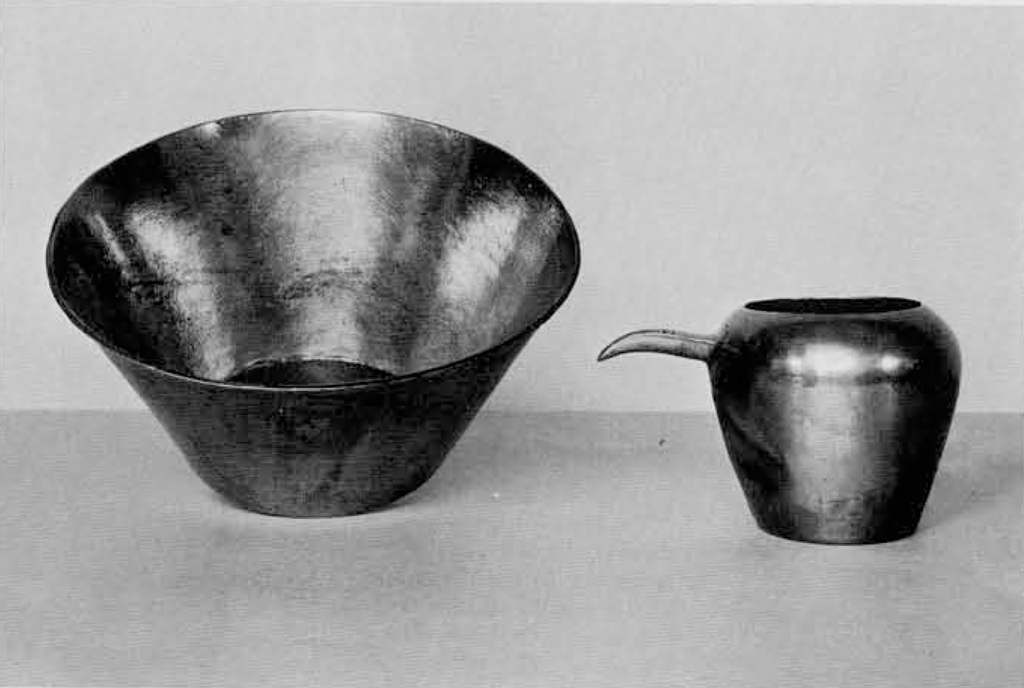
Image Number: 214250
Museum Object Number(s): E15738A / E14244
Archaeological Finds
Although artifacts of metallic tin are rare, the metal was known to metalworkers in Mesopotamia, central Anatolia, the Troad and the Cyclades by the mid-third millennium B.C. when the first bronzes were made in these areas. Tin bronze may he several hundred years earlier in Tepe Yahya in southwestern Iran, a location where early bronze is not surprising in view of the later texts which describe tin as coming into Mesopotamia from the east.
Three objects of metallic tin which antedate 1200 B.C. appear in the archaeological record. The earliest is a bracelet made of one strip of tin twisted around a second from Thermi IV (W. Lamb 1936: Fig. 50; pl. XXV, 30-24). C. H. Desch found that the tin is pure with no copper, silver or lead and felt that the trace of iron which he detected probably came from the adhering earth (Ibid.: 215). Two tin objects from Egypt date to the late Eighteenth Dynasty (14th century B.C.). One is a pilgrim flask with hinged lid, now in the Ashmolean Museum (Ayrton et al. 1904: 50; pl. xvii, 20) and the second a fragmentary tin ring from Gurob (Petrie 1904: 19; pl. XXII, 10). The former is quoted as being made of “pure tin,” as is the latter which was analysed by Dr. Gladstone. The rarity of metallic tin finds has suggested in the past that ancient bronze-workers were not using smelted tin, but rather cassiterite ore. The 8 kg. of white material with the consistency of toothpaste found in the shipwreck off Cape Gelidonya, Turkey, might have forced a reconsideration of this hypothesis had its preservation not been so poor and the analysis more conclusive (Dykstra in Bass 1967: 171-172). By wet chemical analysis, the material was found to contain 71% calcium carbonate, some minor impurities and almost 14% tin. Dykstra suggests that the action of seawater had caused the tin to be replaced with calcium carbonate, but this chemical exchange seems unlikely. A second difficulty in interpreting this find as a tin ingot involves its color. Tin oxide is usually blackish, while the Gelidonya material was clearly white, although it is possible that immersion had somehow affected the characteristic oxide color of tin. The Gelidonya “tin” should be reanalysed before any definite conclusions about its identification can be reached.
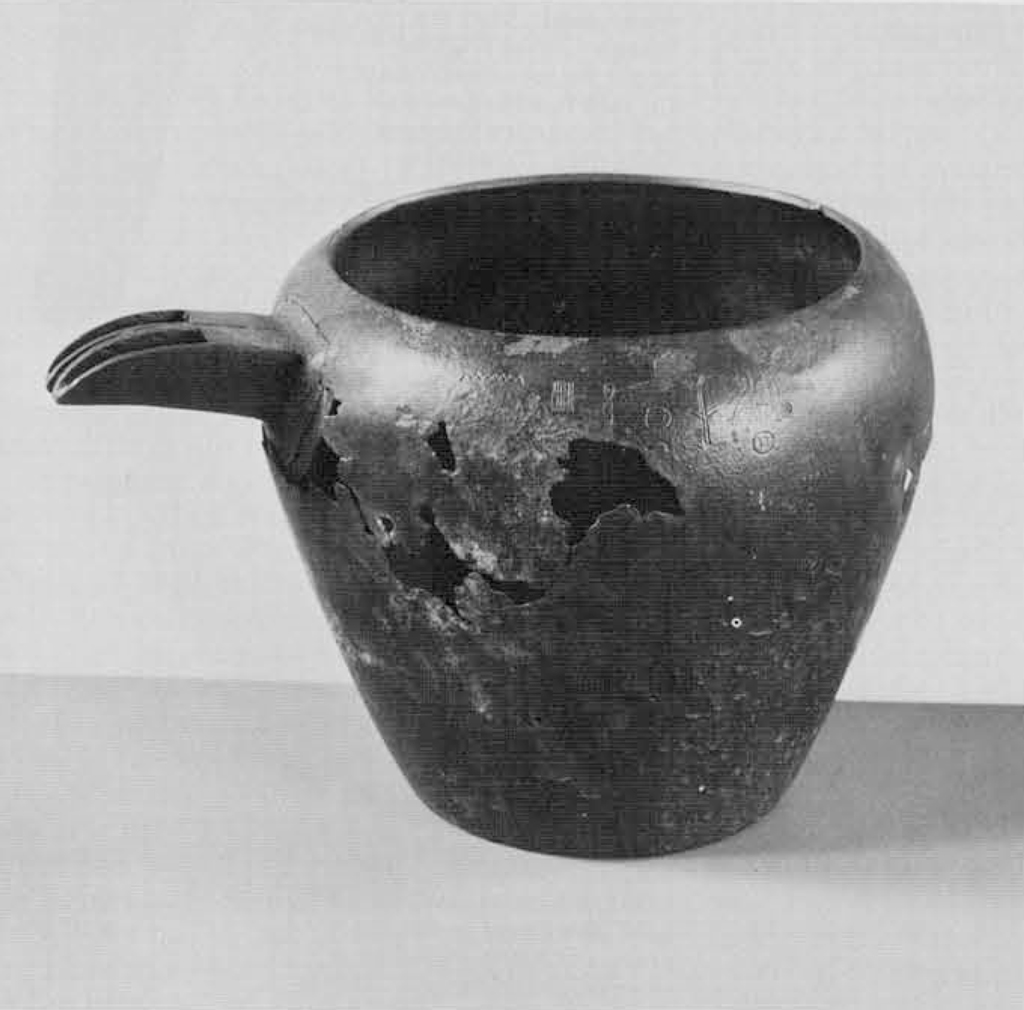
Museum Object Number(s): E9595
The number of metallic tin objects known to us does not increase after 1000 B.C. Of interest is the cargo of a ship which sank in the Mediterranean off Port-Vendres, France between A.D. 20 and 50 (Coils et al. 1975). Fourteen tin ingots of a curious fenestrated type (for example Fig. 22) were distributed throughout the wreckage. The ingots vary in weight from slightly over 3 kg. to almost 9 kg. X-ray diffraction and atomic absorption analysis of twelve of the ingots showed them to be a pure tin with copper and lead present in only minute quantities. These ingots are particularly tantalizing because we have looked for their Bronze Age counterparts for years; the rarity of archaeological finds of tin ingots even in the Roman period when the extraction and trade in tin are fairly well documented is quite remarkable.
New Finds And New Perspectives
The rarity of the occurrence of tin means that it had to be shipped over great distances. It is unlikely to have been shipped as ore because ore has a greater bulk than a smelted metal. Therefore it was predicted that some form of tin ingot must have been used in the Bronze Age. Indeed, blue or white ingots which have been identified as tin or lead appear in Egyptian tomb paintings with representations of copper oxhide ingots. The tin ingot hypothesis has been confirmed by the discovery of two tin ingots (Fig. 23), now in the Museum of Ancient Art of the Municipality of Haifa, Israel. We are greatly indebted to Dr. Yosef Elgavish, Director of the Museum, for his kindness in allowing us to study and remove samples from the ingots.
| Table 1. By weight percent, nd=not detected | ||
|---|---|---|
| Haifa Ingot 8251 | Haifa INgot 8252 | |
| Atomic absorption | ||
| Copper | 0.018 | 0.018 |
| Nickel | 0.009 | 0.008 |
| Iron | 0.045 | 0.071 |
| Silicon | nd | nd |
| Aluminum | nd | nd |
| Magnesium (by difference) | 13.42 | 12.38 |
| Tin | 86.51 | 87.52 |
| Emission | ||
| Copper | present | present |
| Nickel | present | present |
| Iron | present | present |
| Silicon | present | present |
| Aluminum | present | present |
| Magnesium | present | present |
| Calcium | present | present |
| Indium | present | present |
| Cobalt | present | present |
| Strontium | present | present |
| Germanium | nd | nd |
| Analysis of Section Not Including Surface | ||
| Atomic absorption | ||
| Tin | 94.83 | 95.30 |
| Magnesium (by difference) | 5.04 | 4.14 |
| Iron | 0.10 | 0.52 |
| Copper | 0.016 | 0.016 |
| Alumnium | nd | nd |
| Silicon | nd | nd |
| Cobalt | nd | nd |
| Nickel | 0.018 | |
The ingots are roughly rectangular and have trapezoidal sections. They are 31.4 cm. and 32.4 cm. long, 19.0 and 21.6 cm. wide and 3.7 and 3.6 cm. thick, and weigh 11.4 and 11.9 kg. Each ingot has two signs engraved in the surface which are of Cypro-Minoan type, a script more popular in Cyprus than elsewhere and presumably indigenous to the island. The ingots were found by divers off the shore near Haifa and reportedly represent only a portion of a greater number of tin ingots. Further inquiries are now being made in Haifa to obtain more information about the location from which the ingots came and material that might have been associated with them.
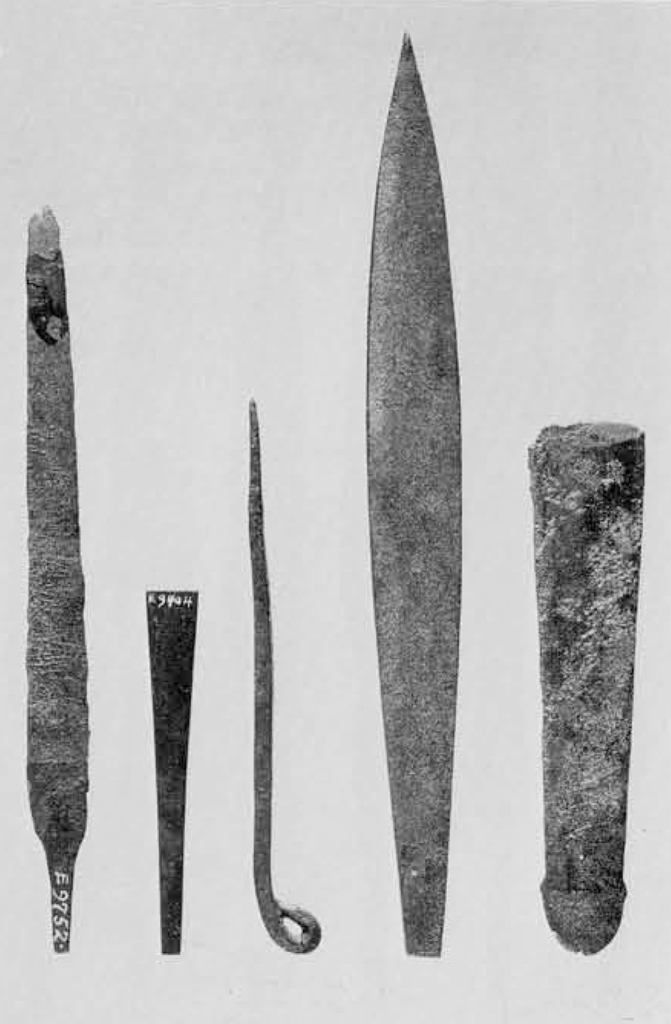
Museum Object Number(s): E9404 / E9454 / E9746 / E9584
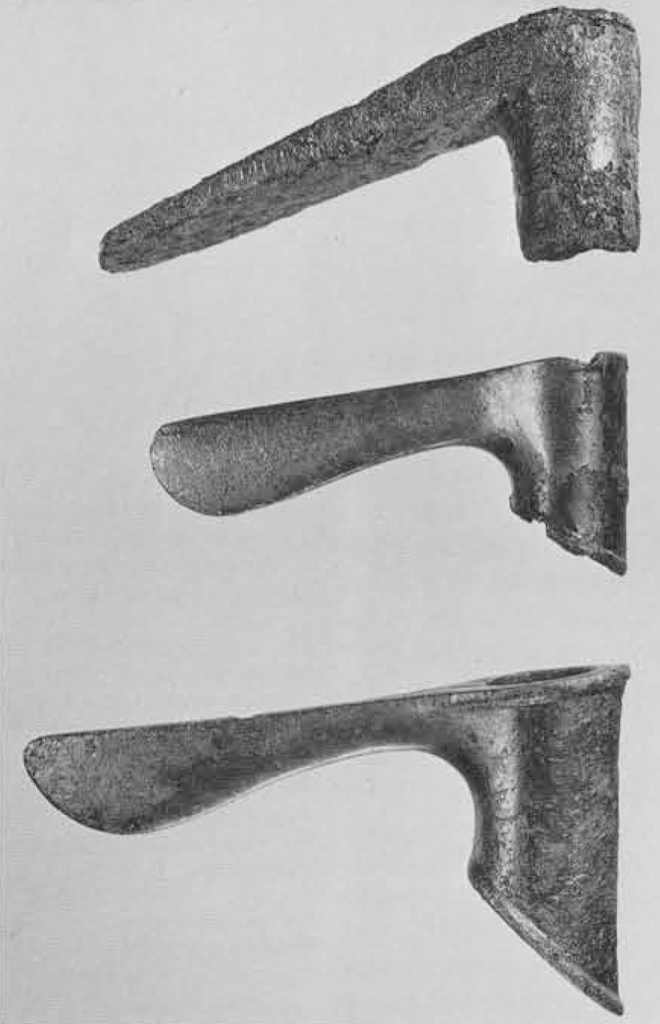
Image Number: 8144
Museum Object Number(s): B17419 / B17512 / B17413
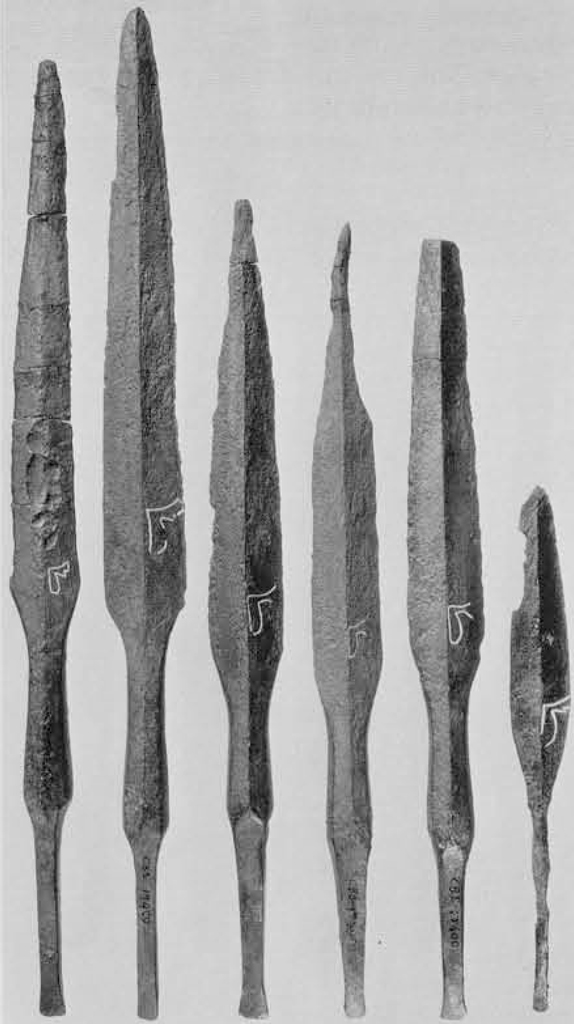
Image Number: 8148
Museum Object Number(s): B17400A / B17400B / B17400C / B17400D
A triangular wedge was removed with a hacksaw from the back upper left corner of each ingot for metallography and elemental analysis. The wedges are each about 1.0 cm. thick and 6.6 cm. and 4.5 cm. long. Drillings from the interior of each sample were submitted for elemental analysis by optical emission spectroscopy to determine which elements are present and by atomic absorption spectroscopy for more accurate quantitative determinations (Table 1). It is clear that the two ingots have substantially the same composition. There are some anomalies in the analyses which must be explained. The magnesium content can only be explained as originating from the sea since magnesium cannot be reduced in a charcoal smelting process. Magnesium is the second largest metallic constituent of seawater, so it is probably present in the form of magnesium salts. Other samples from the internal parts of the wedges have been submitted for neutron activation analysis, which, in spite of what appears to be internal corrosion (see below), should allow a more precise determination of the composition.
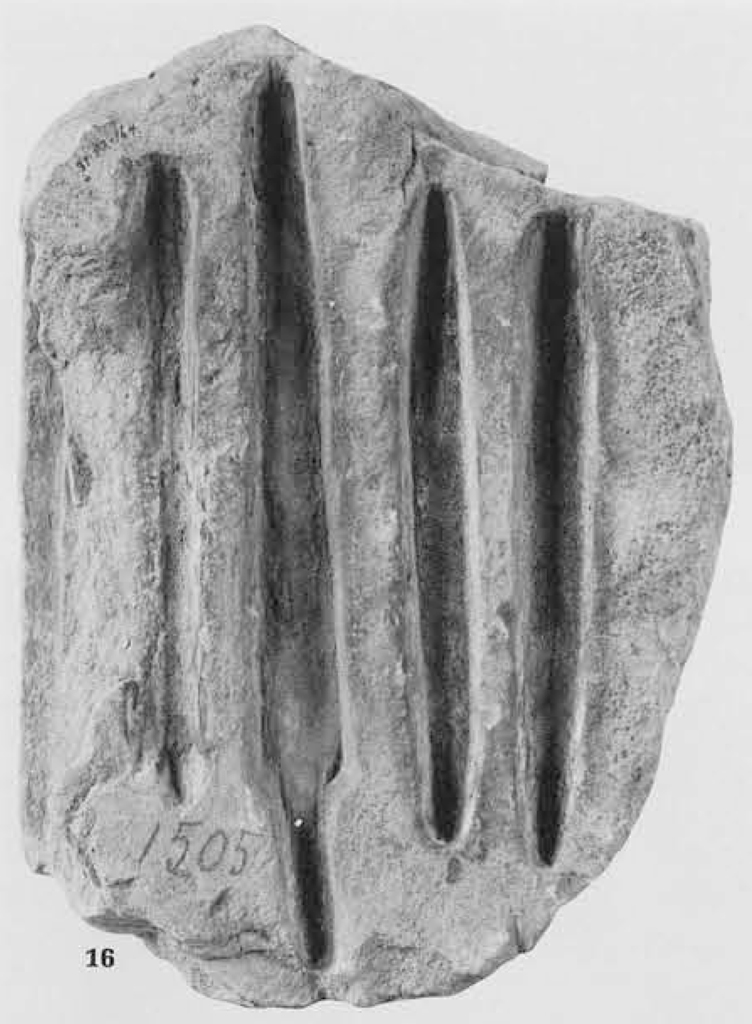
Museum Object Number(s): 31-52-164
Few trace element analyses of tin sources and tin objects have been cited in the literature. Cobalt and germanium traces are identifying features of Cornish ores (Tylecote 1962: 63), but the Haifa ingots contain only cobalt and are thus probably not of Cornish origin. The two Egyptian tin objects and the bracelet from Thermi discussed above were determined to be “pure tin,” but the details of the analyses are not published. It may be possible to analyse the Egyptian objects again, but the Thermi bracelet seems to have disappeared in spite of great effort expended in locating it. The Roman tin ingots were analysed by atomic absorption for copper and lead (G. Perinet in Coils et al. 1975: 94) and show varying amounts of these two elements. Only one of these ingots (no. 10) is at all comparable to those from Haifa with 276 parts per million of copper opposed to 180 parts per million in the Haifa ingots. A more concerted program of elemental analysis by neutron activation is needed before any comparative judgments can be made about the metallic tin objects known from antiquity.

Museum Object Number(s): B17367
In the case of pure tin, elemental analysis is more informative than metallographic study because tin is a soft metal and its structure may change in polishing it for microscopic study. A portion of the wedge taken from each ingot was polished, following standard metallographic procedures, and etched with a solution of one part nitric acid, three parts acetic acid and five parts glycerol. Examination with the optical microscope (Fig. 24) revealed a large grain size, indicating that the ingot had been slowly cooled. Black areas in the tin are probably the beginnings of corrosion, while the small grains which are visible within the large grains are artifacts of polishing. No second phase particles are visible, which would indicate the inclusion of impurities insoluble in tin, but it should also be considered that any second phase material might have been obscured by polishing. The presence of a second phase would reflect any unusual smelting conditions, which are unlikely to have occurred because the tin must have been smelted from a pure cassiterite ore.
Since the Haifa tin ingots do not come from a controlled archaeological context, the signs engraved on them are the only clue to their date. Two of the three signs (one sign is found on both ingots) are identifiable in the Cypro-Minoan syllabary (Masson 1974: 15: signs 95 and 102). The third and common sign is not known in the exact form it appears on the ingots, but it certainly-looks like a member of the same family. Cypro-Minoan script was used from the end of the sixteenth century B.C. to the end of the eleventh century, so the ingots must date to this period. Emilia Masson is studying the signs to determine whether their paleography will permit a closer dating.
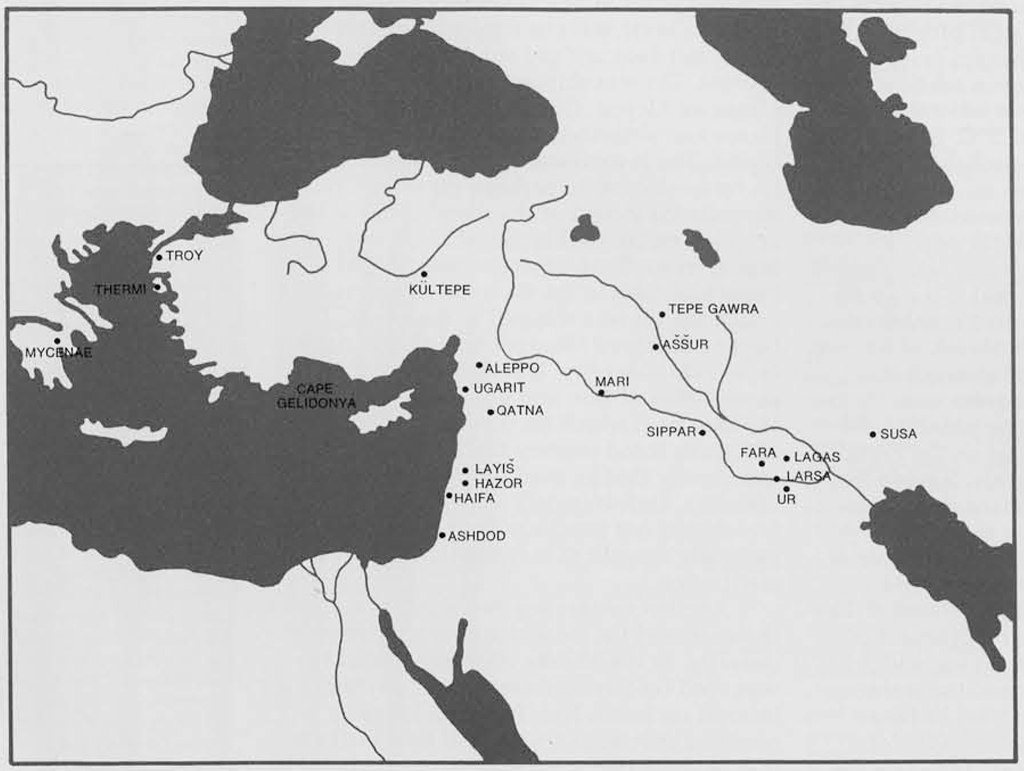
The Cypro-Minoan signs on the Haifa tin ingots have important implications for metalworking and the metals trade in the Late Bronze Age. First, it is now clear that metallic tin was, in at least some cases, being used in bronze manufacture, rather than ores or master alloys with a high percentage of tin. Secondly, it is probable that both metals necessary in the making of bronze were distributed by an administrative complex centered on Cyprus. Although the source of the tin is unknown, it passed through Cyprus where it received the markings which are also found on some copper ingots of Late Bronze Age date. It is logical that copper and tin would have been shipped together, since they were to be used together. We do not know whether tin was already in ingot form when it arrived in Cyprus or whether imported ores were smelted on the island. Although the former seems more likely, the signs do not clarify the issue since they were engraved on the ingots after they were cast. Signs on oxhide ingots are in some cases part of the casting but on others subsequent engravings.
Cypro-Minoan script was also used extensively in Ugarit, which is therefore an alternate possibility for the immediate transshipment point of the Haifa ingots. It is nonetheless preferable to view Cyprus as the port of origin because the copper must have come from there, implying the existence of an effective mechanism of distribution of metals. Although the administrative organization was based on Cyprus, it does not help us to identify the administrators. Cyprus’ location and its role as an international emporium mean that it could have received tin from both the east and the west.
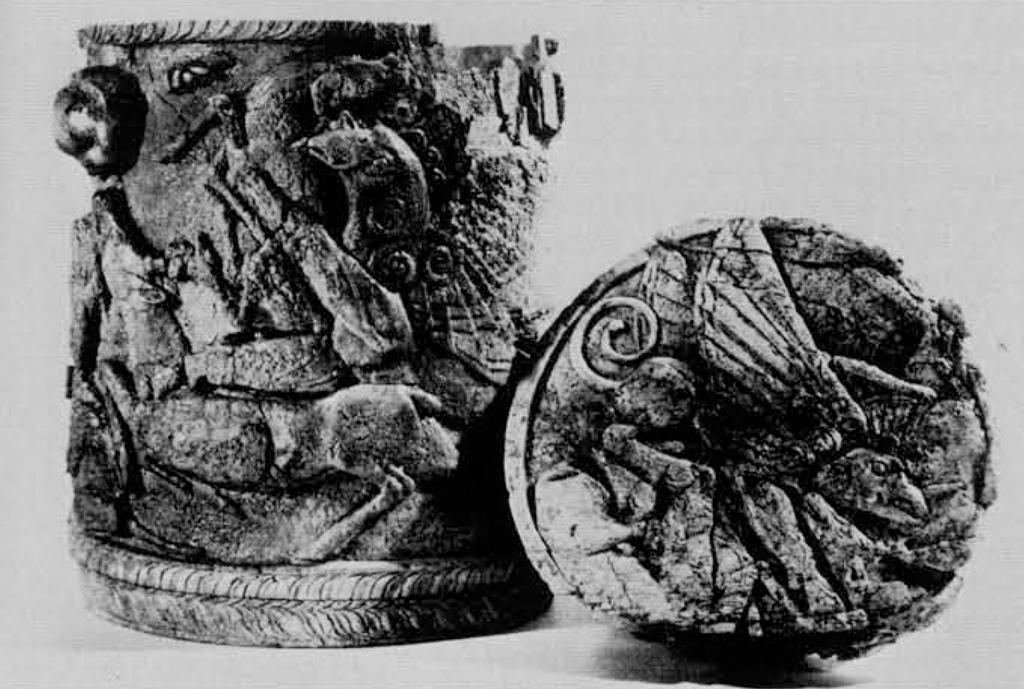
Image Number: 210837
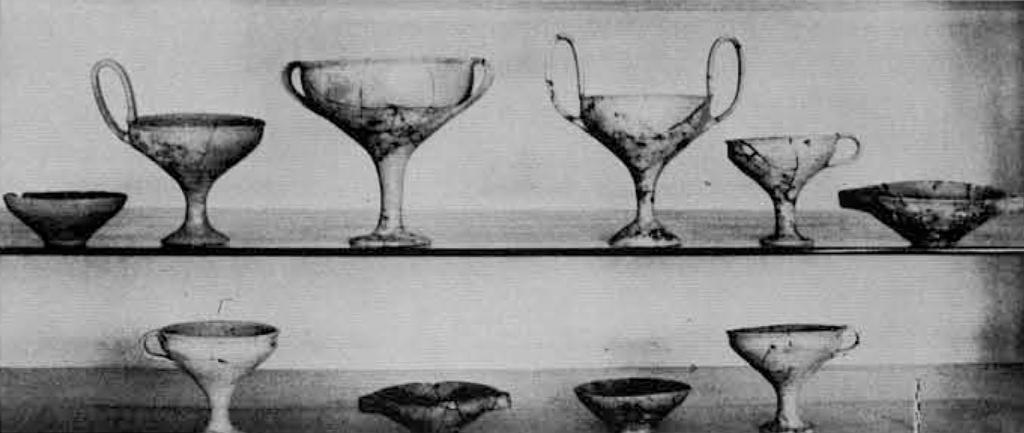
The Haifa ingots must have been part of a ship’s cargo. The ingots were loaded in Cyprus, or less likely in Ugarit, and shipped down to the Levantine coast, perhaps with a port in southern Palestine like Ashdod or even Egypt as a destination. The ship carrying the ingots finished its voyage near Haifa in an area known today as an ancient ship graveyard.
It has always been somewhat curious that oxhide ingots, except for one votive from Tell Beit Mirsim, are unknown from Palestine, since any shipping to Egypt would have passed along its coast and relations with Cyprus were close in the Late Bronze Age. The land has its own sources of copper and probably therefore did not participate in the ancient trade in Cypriote copper. But Palestine has no tin and, after the advantages of tin bronze over pure copper and arsenical copper were learned, would have needed to obtain tin from elsewhere. The Haifa ingots could indicate that the gap in Palestine’s natural resources was being filled by a Cypriote intermediary.
